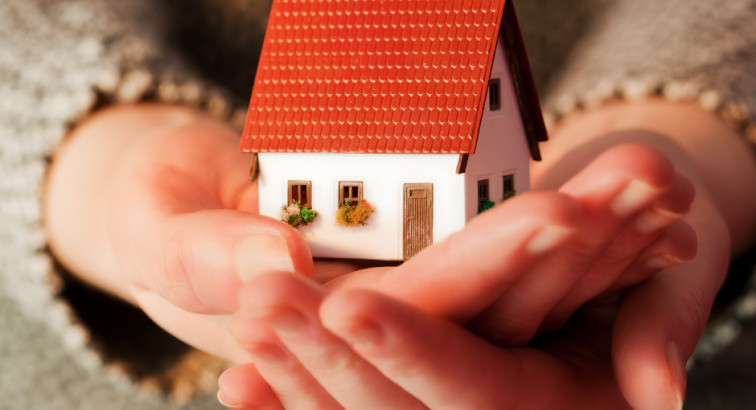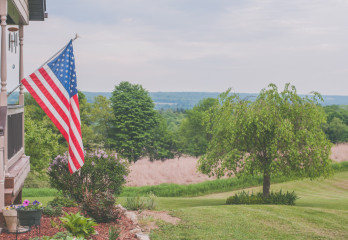Earthquakes in California, hurricanes in Florida, and tornadoes in the Midwest are typically what comes to mind when we think of climate risk. It’s easy to think that if you don’t live in one of those areas, your home is relatively safe. But the fact is wherever you live, the hazards that the natural world poses to people and places — is something you need to be prepared for.
Climate Threats by the Numbers
Here are just a few examples of the risks American homeowners face:
So, what can homeowners and homebuyers do? Understand potential climate threats to our homes, and act to mitigate the risks.
1. Assess
If you’re buying a new home, the adage of “location, location, location” also applies to climate risk. Before purchasing a property — or choosing a new region to move to — learn more about the potential hazards involved. Does your ocean view come with a risk of mudslides or hurricanes? Does a warmer climate mean potential droughts? And do your West Coast dreams put you in a wildfire zone?
If the answer is “yes,” that doesn’t mean you need to move to a bunker in a low-risk region. But you do need to understand what to prepare for and how one property compares to another.
Tools on these sites can help you assess property risks and learn how to alleviate them:
2. Protect
Once you know what the likely risks are to your home, you can make improvements to shore it up against those threats. You can:
- Install wind-resistant doors, windows, and storm shutters
- Anchor heavy furniture to walls
- Trim trees and bushes to reduce storm debris
- Landscape with nonflammable materials (like stone and cement) and fire-retardant plants
- Locate water, gas, and electrical lines and learn how to turn them off, either on your own or under directions from an emergency official
For larger threats, like earthquakes or coastal storm surges, you may need to retrofit your entire house. If you’re comfortable doing your own home improvement projects, you may be able to make some changes yourself. For example, the California Earthquake Authority provides do-it-yourself retrofit tips to protect your home from earthquakes, while FEMA has a free 200-page guide on protecting your home from flooding. That said, larger or more complex projects are likely best left to professionals.
If protecting your home is going to take a large financial investment, you may be able to use your home’s equity to pay for improvements. Reach out, we can help you learn more!
3. Insure
Insurance commercials make it seem like once you write a check to their company, you’re covered for everything that could possibly happen, but the truth is that insurance policies are complex legal documents, and you need to understand what you’re paying for.
Many homeowners insurance policies cover damage from threats like fire, lightning, wind, and hail, but don’t wait until after a loss to find out what your coverage is. This is especially true when it comes to whether your policy will cover your damage at replacement cost (what it will cost you to repair or replace an item) or actual cash value (what your property and possessions are worth, minus depreciation).
For example, what happens if a hailstorm destroys your 10-year-old roof? Assuming the loss is covered, then:
- A replacement cost policy would pay the cost of materials and labor to replace the roof at today’s prices.
- An actual cash value policy would deduct 10 years of depreciation and pay the remainder of the cost. You would pay the depreciation cost out of pocket, separate from your deductible.
Two major costs that are not covered by standard policies are flooding and earthquakes. This coverage must be purchased separately, and its cost is directly proportional to how likely this type of damage is. This is why it’s critical to know a home’s risk for these threats before deciding to buy!
To better understand homeowners insurance coverage, learn more from the Insurance Information Institute or talk to your insurance agent. Your agent can also help you understand what insurance you need for your specific situation, how long the claims process might take, and what precautions to take to secure your home immediately after a loss.
4. Prepare
Don’t wait until the last minute to stock up on items you’ll need in case of a disaster! Stocks of batteries, flashlights, tarps, bottled water, and nonperishable foods will begin flying off the shelves as soon as weather warnings escalate, and in addition to not being able to find what you need, you may risk your safety going out in hazardous weather. Ready.gov, the American Red Cross, and your local or state disaster preparedness agencies can tell you what to have on hand long before the barometer even flutters. They’ve done the prep work; you just have to assemble the supplies!
Sources:
[1] First Street Foundation, “First Street Foundation Releases New Data Disclosing Flood Risk of Every U.S. Home,” June 29, 2020.
[2] First Street Foundation, “Fueling the Flames,” May 16, 2022.
[3] Columbia Climate School, “Here’s What We Know About How Climate Change Fuels Hurricanes,” October 3, 2022.
[4] U.S. Geological Survey, Earthquake Shaking Hazard Estimates and Exposure Changes in the Conterminous United States, December 1, 2015.



